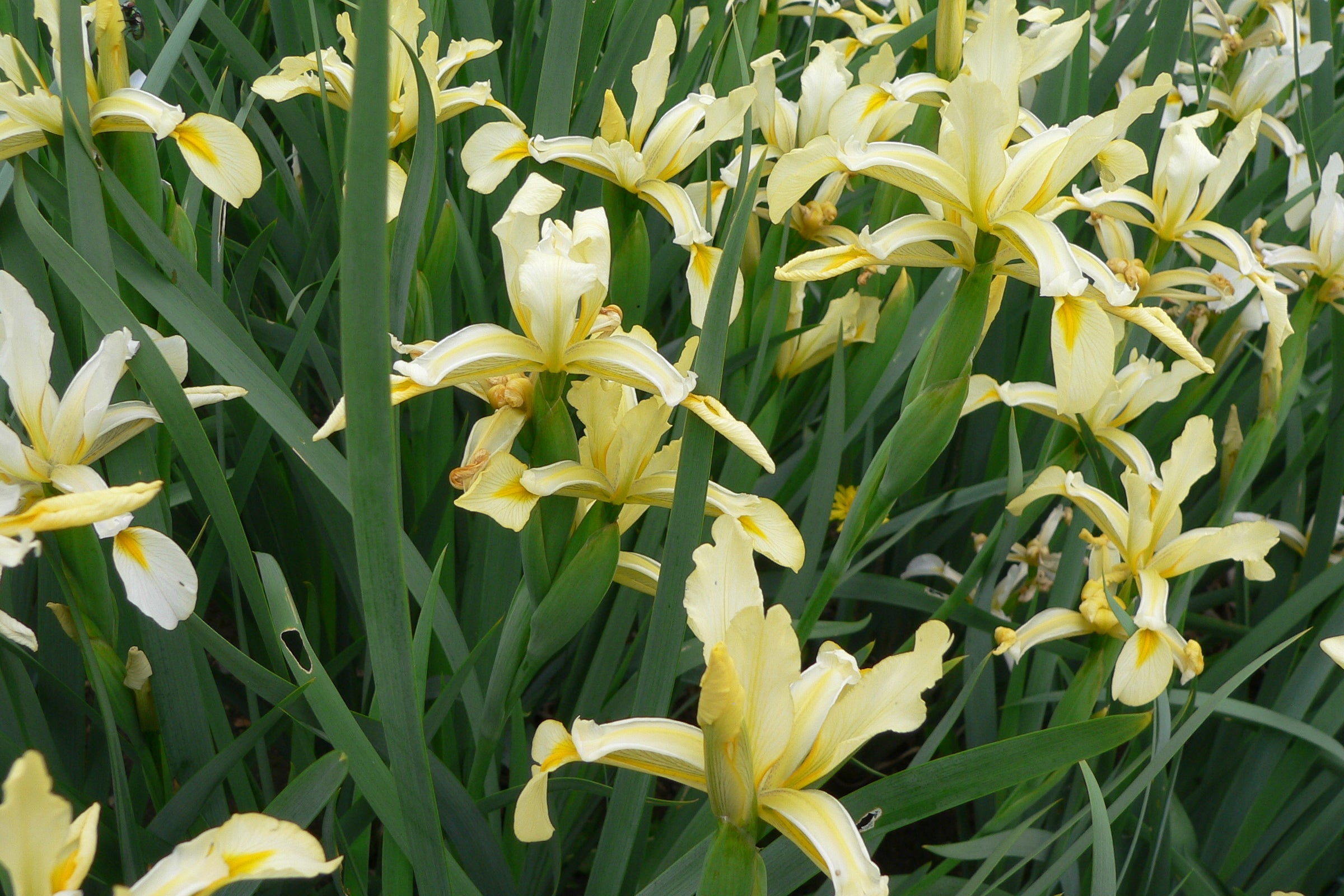Iris orientalis Mill.
Approx. 0.5 litre pot
About this cultivar:
Iris orientalis is a species native to Turkey and Greece, with white flowers that have a yellow mark or blotch that varies in size. It was also known as Iris ochroleuca for a long time. It is commonly known as yellow banded iris in the U.S. and Turkish iris in the U.K. but also has some other less common names. First described by Philip Miller in The Gardeners Dictionaryin 1768. and by 1788, Curtis's Botanical Magazine described it using the name Iris ochroleuca. This was the start of the confusion between the 2 irises! Over 200 years later people are confused!
Some people also think it is a Japanese Iris, due to the name 'orientalis'. The Latin specific epithet orientalis refers to 'eastern' (as any good classicist knows) but it is sometimes used in botany as 'from the Orient' aka 'Far east'.
Anyway, one of my favourites, it has the Royal Horticultural Society Award of Garden Merit (RHS AGM), and should have it in your garden! What else do you need to know?
- Position: Full sun, partial shade
- Soil: Almost any soil, grows well in Ballyrobert
- Flowers: July, August
- Other features: Royal Horticultural Society Award of Garden Merit (RHS AGM), Cut Flowers or Dried Flowers
- Hardiness: H6 - Hardy in all of UK and northern Europe (-20 to -15°C), Fully hardy - grows well in Ballyrobert
- Habit: Clump forming
- Foliage: Deciduous, semi evergreen
- Height: 60 - 90 cm (2 - 3 ft)
- Spread: 45 - 60 cm (1.5 - 2 ft)
- Time to full growth: 2 to 5 years
- Plant type: Herbaceous Perennial
- Colour: Green, white, yellow
- Goes well with: Hosta, Hemerocallis, Geranium
About this genus:
Iris (i-ris) is a genus of 260–300 species of flowering plants with showy flowers. It takes its name from the Greek word for rainbow, referring to the wide variety of flower colours found among the many species. As well as being the scientific name, Iris is also used as a common name. Long in cultivation there seem to be as many cultivars as plants. Culturally the genus has had quite an impact. The fleur-de-lis, a stylized Iris, first occurs in its modern use as the emblem of the House of Capet (rulers of France 987 to 1328). It is also the universal symbol for Scouting. Many artists have a 'thing' with Iris, not least Van Gogh- who was a fan of Iris (not just sunflowers).... see images opposite!
As a group, Iris species can range from drought-tolerant dry land perennials to bog dwellers and from sun to shade, so there is no set of cultivation rules for the genus as a whole. In general though the cultivars we have in our garden (and sell), are tough, low maintenance plants perfect for wet gardens and similar sites.
Try pairing irises in the garden with Hosta, Hemerocallis, Geranium. They also look great as a cut-flower; the reason you don't get them in florists is that they don't transport well.


















